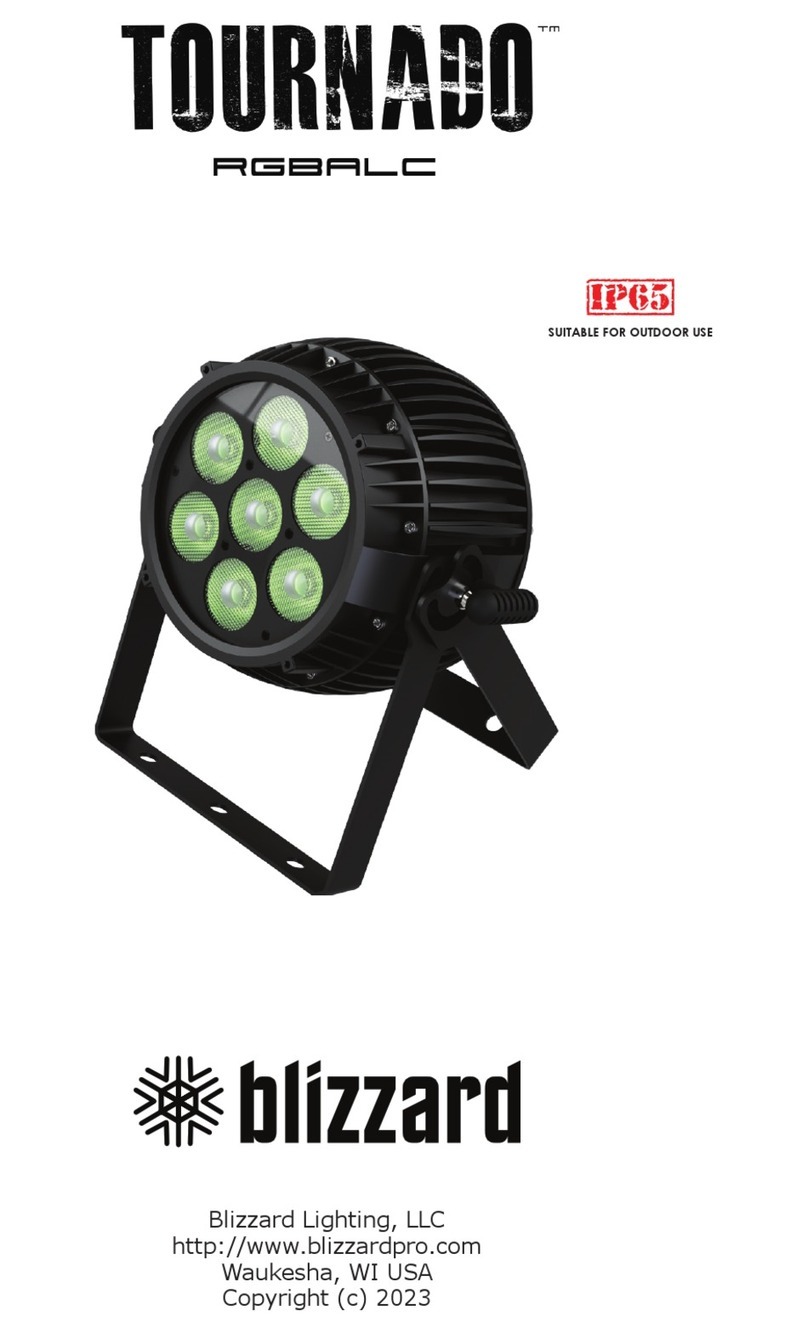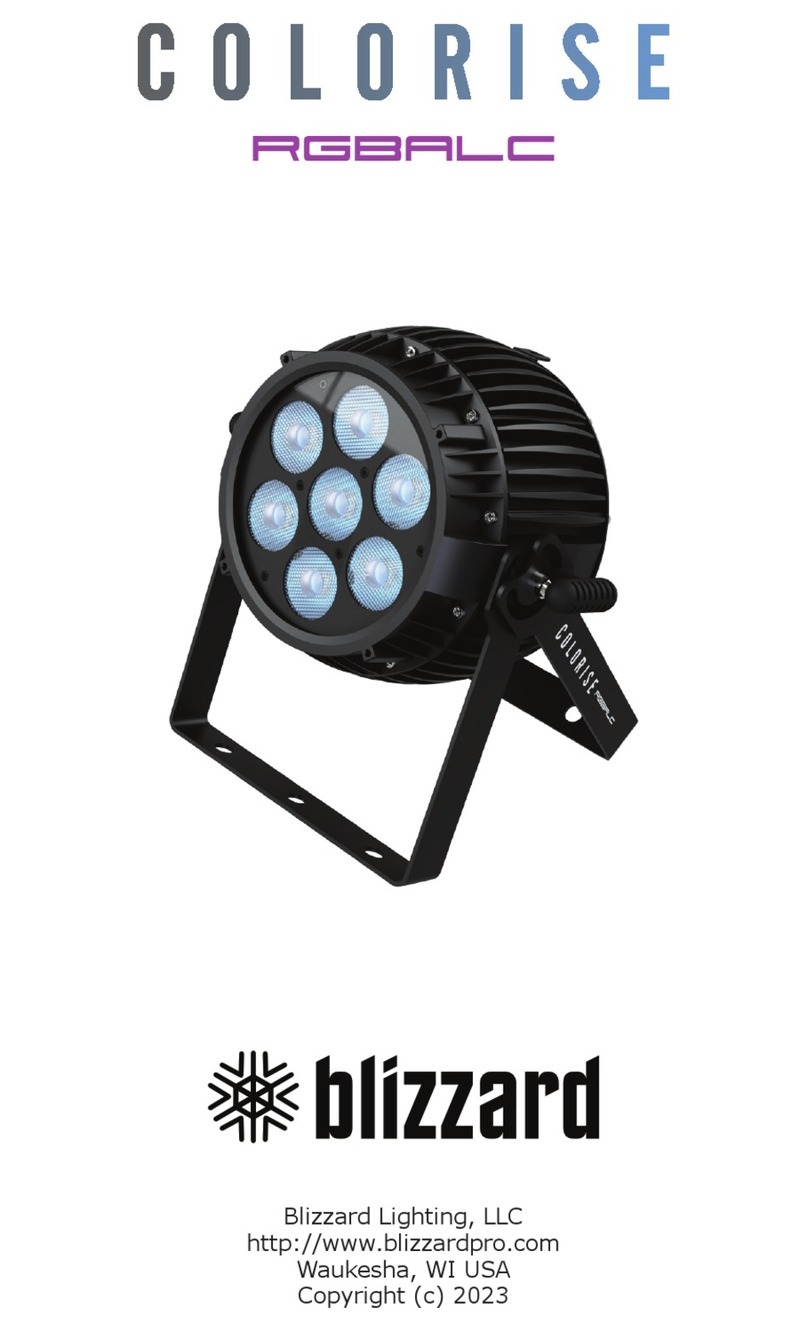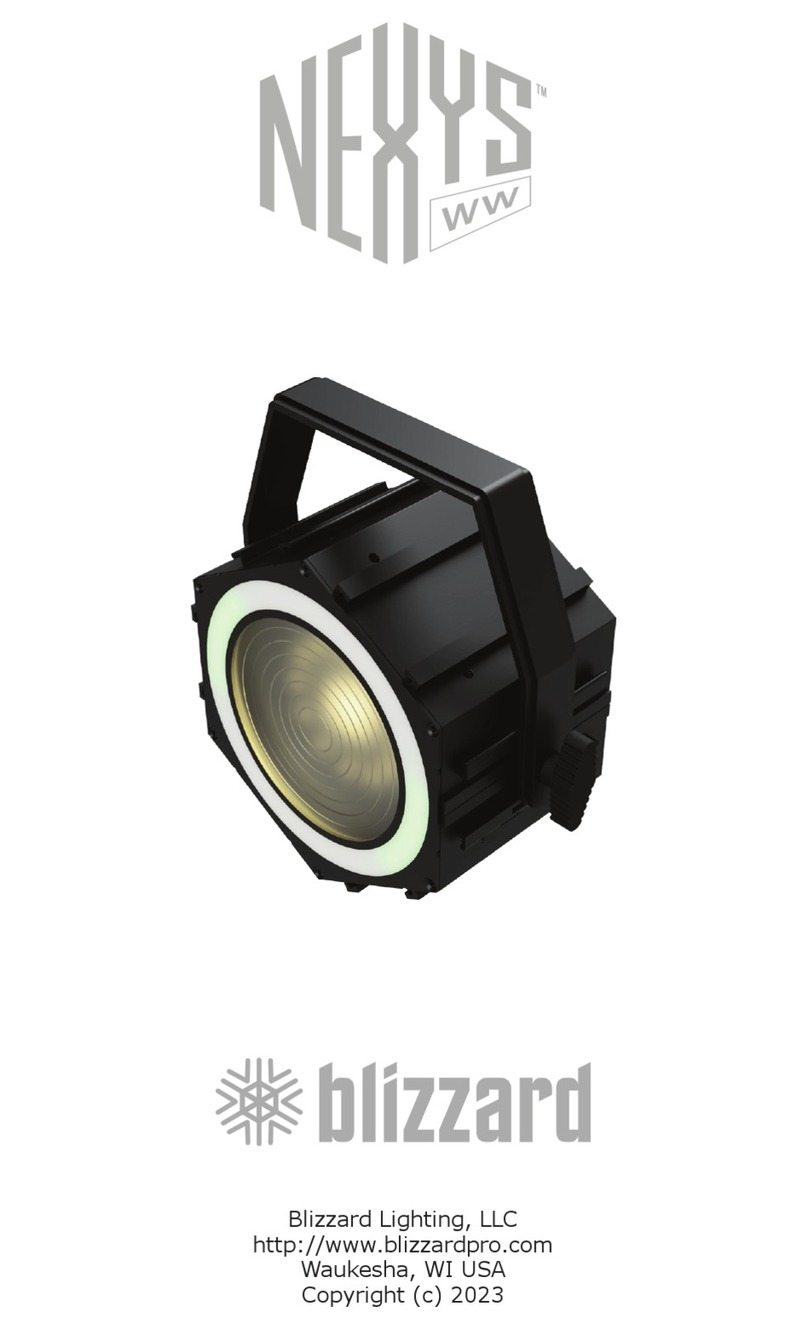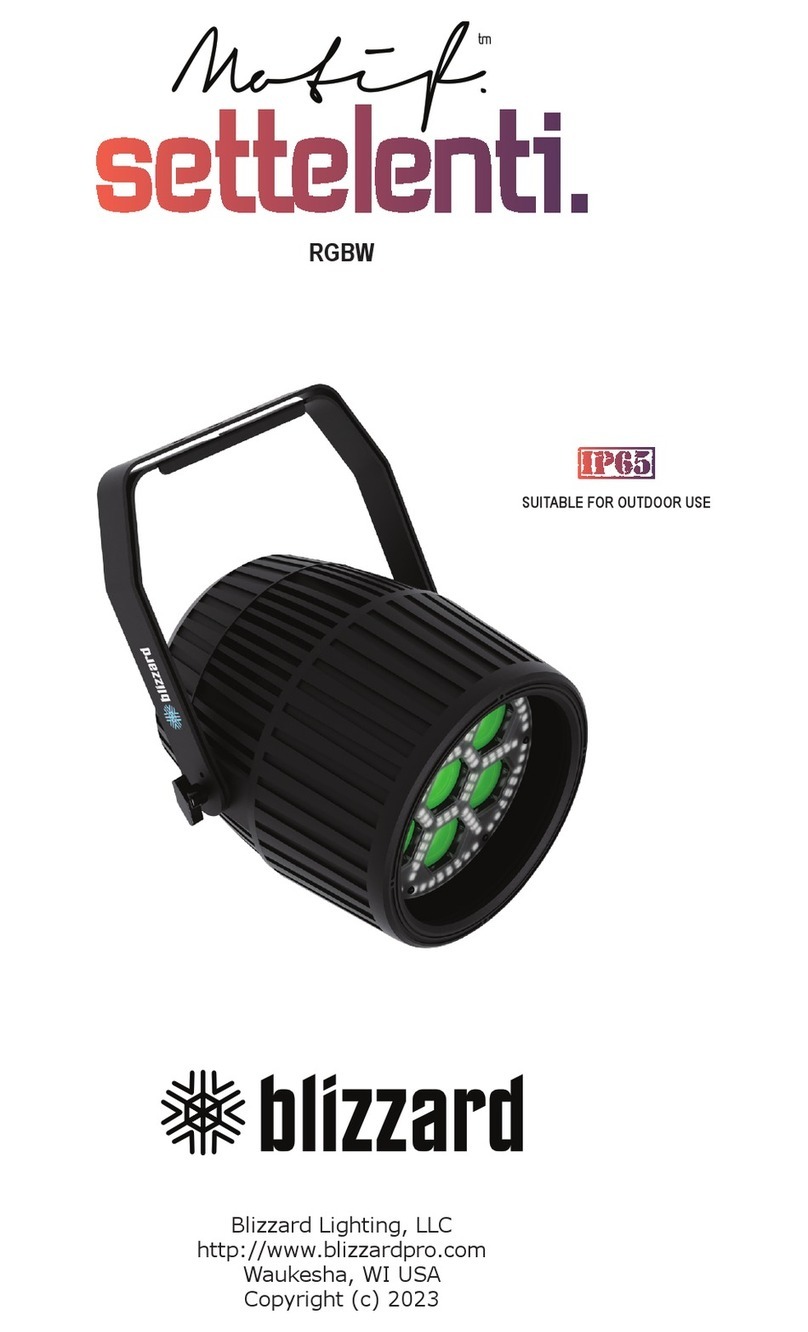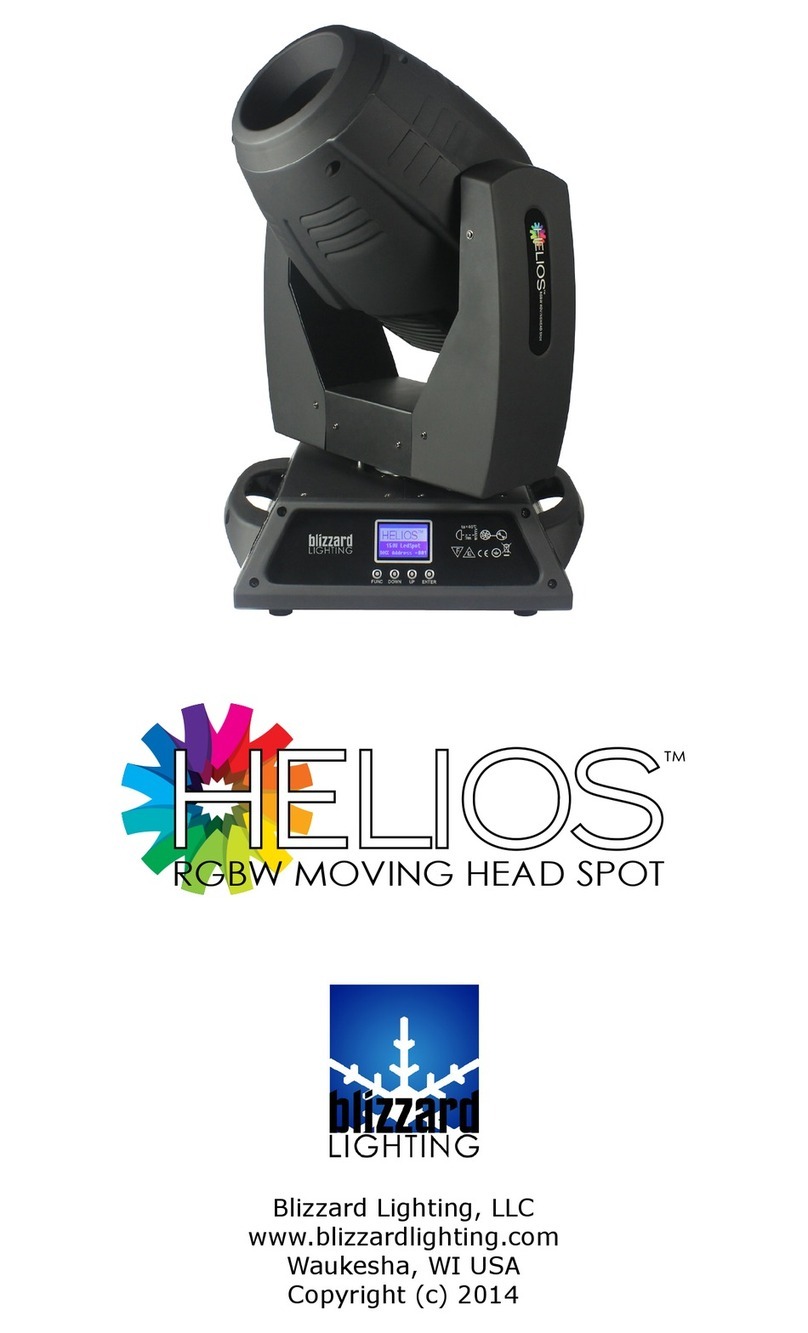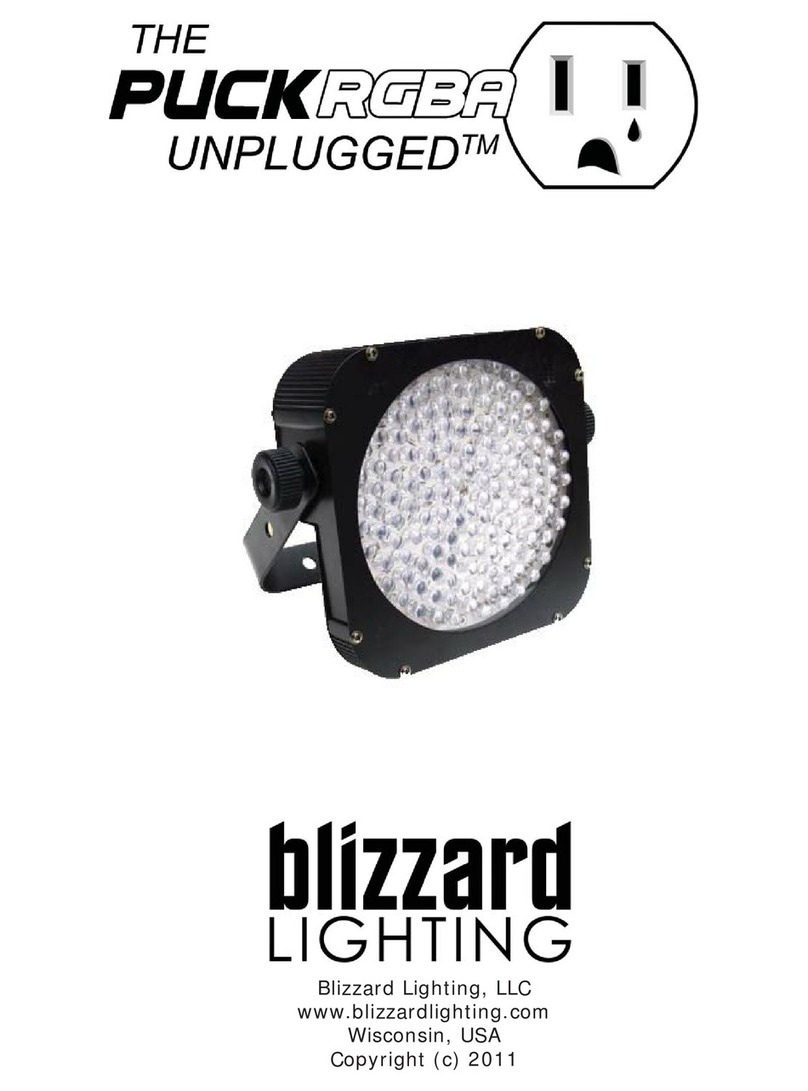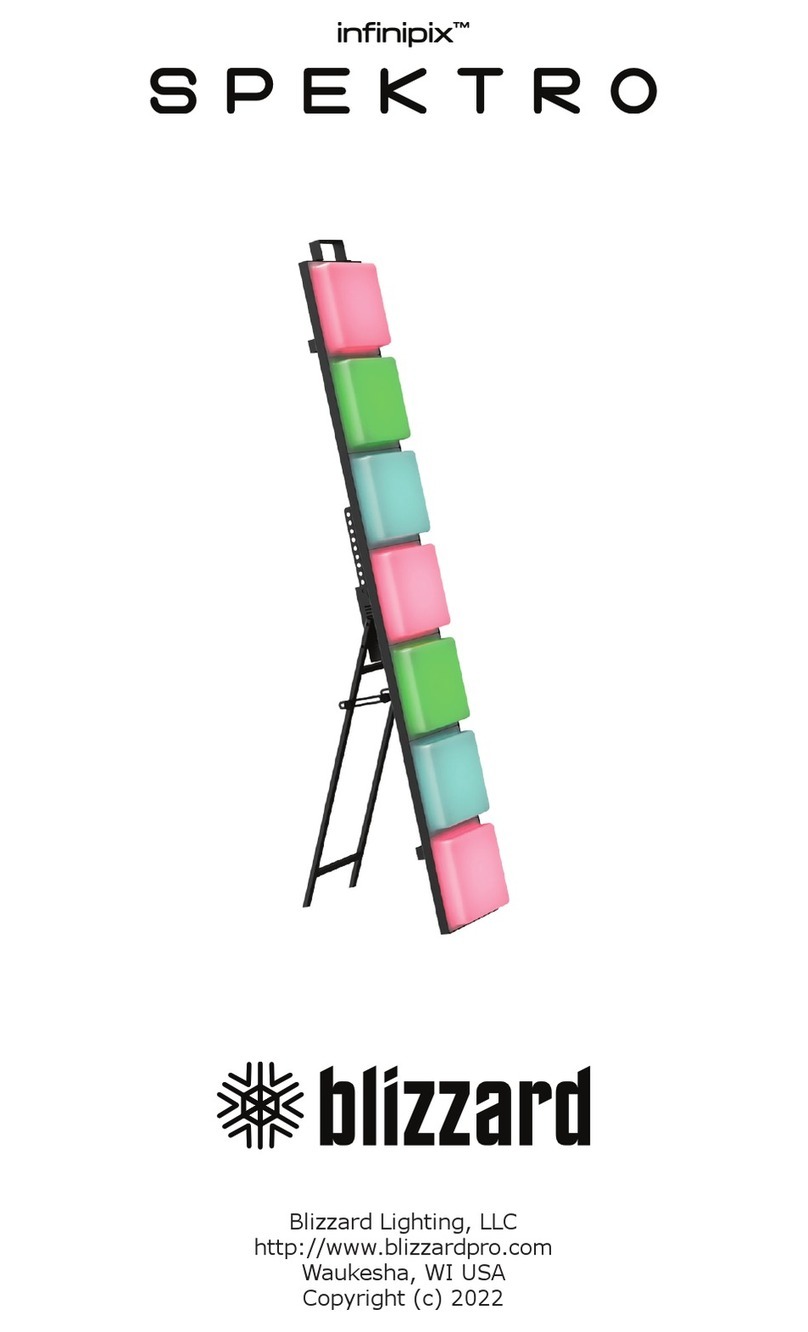
Page 3
StormChaser Manual Rev. A Copyright (c) 2011 Blizzard Lighting, LLC
1. GETTING STARTED
What’s In The Box?
• 1 x StormChaser™
• 2 x Mounting brackets w/bolts
• This Lovely User Manual
Getting It Out Of The Box
Congratulations on purchasing one way cool, way flexible, way original
LED strip light! Now that you’ve got your StormChaser™ (or hopefully,
StormChasers!), you should carefully unpack the box and check the
contents to ensure that all parts are present and in good condition. If
anything looks as if it has been damaged in transit, notify the ship-
per immediately and keep the packing material for inspection. Again,
please save the carton and all packing materials. If a fixture must be
returned to the factory, it is important that the fixture be returned in
the original factory box and packing.
Powering Up!
All fixtures must be powered directly off a switched circuit and cannot
be run off a rheostat (variable resistor) or dimmer circuit, even
if the rheostat or dimmer channel is used solely for a 0% to
100% switch.
AC Voltage Switch - Not all fixtures have a voltage select switch, so
please verify that the fixture you receive is suitable for your local pow-
er supply. See the label on the fixture or refer to the fixture’s specifi-
cations chart for more information. A fixture’s listed current rating is
its average current draw under normal conditions. Check the fixture or
device carefully to make sure that if a voltage selection switch exists
that it is set to the correct line voltage you will use.
Warning! Verify that the voltage select switch on your unit
matches the line voltage applied. Damage to your fixture may
result if the line voltage applied does not match the voltage
indicated on the voltage selector switch. All fixtures must be
connected to circuits with a suitable Ground (Earthing).
Getting A Hold Of Us
If something is wrong, just give us a call or send an email.
We’ll be happy to help, honest.
Blizzard Lighting
PO Box 1874 Brookfield, WI 53008
www.blizzardlighting.com
